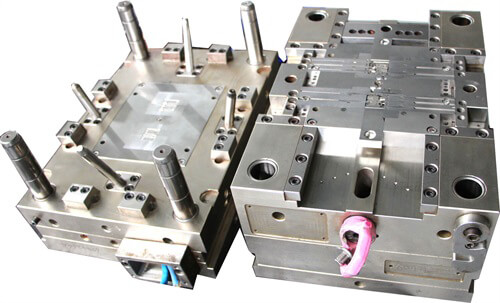© 2017-2019 Kunshan Feiya Precision Moulding Co., Ltd. All rights reserved. Site Map Designed by Alibaba
The research and development unit together with the plastic injection molding suppliers are working towards achieving more innovative methods of carrying the injection process. The aim is to increase efficiency while minimizing possible damage to the plastic end product.
One prominent achievement in this innovative framework is the idea of reducing the cooling times in the manufacture of elongated hollow bodies such as the parts with thick-walled areas or the handles and ducts in the engine compartment. This is a process known as the Water Assisted Injection Molding (WAIM).
Here, the idea is to prevent the used medium from evaporating during the melt displacement process. This basic approach shows that water is not only an excellent cooling medium, but a much cheaper, reusable and universally applicable medium.

Process description
The basic working principle of water injection is the generation of a sufficiently large water flow and a flow front to displace the melt. This flow is essential to be able to take advantage of all the advantages that a liquid medium offers, so the key piece of this new technology is the water injector. One or more pumps are used to inject the water at temperatures between 10ºC - 80ºC and pressures of up to 350 bars, into the pre-injected polymer in the cavity.
The numerous tests and trials carried out by the Aachen institute showed that the best system for mass production is a hydraulically actuated injector. Such an externally actuated injector provides a high level of process safety and, in addition, allows automatic recovery of the injected water during the injection cycle, that is, when the part is still in the closed mold. As a general rule, the injected water should not remain inside the part, so it is essential that the injection technique chosen for mass production enables its automatic recovery.
Sequence of filling the mold cavity in water-assisted injection (with secondary cavity)
The water can initially remain on the part and then be removed. For this, the part is sealed with what is called a post-injection, which at the same time takes care of the holding pressure. In this way, in the over-injection of parts the water can be used practically as if it were an incompressible nucleus. The removal of water from the part in the mold can be carried out by compressed air or by (partial) evaporation after pressure relief. The recovered water can be filtered and, if necessary, put back into the circuit.
Different water injection methods
Each of these technologies has some advantage over the other. For example, one of the main limitations of short shot technology is the surface marking at the shift point. This defect disappears when full injection technology with secondary cavity is used.
Main applications
Automotive: cranks and arms, pedals, dashboards, door module, roof rack (luggage rack), wiper arms.
Medicine: needles for blood collection and similar equipment.
Sport / Leisure: hockey sticks, golf stick handle, etc.
White line: Ducts for washing machines and similar devices for household appliances. Office automation: feed roller for printers, copiers, etc.
As a trusted plastic injection molding supplier, we are out to provide you with everything you need for your industrial molding industrial activities.